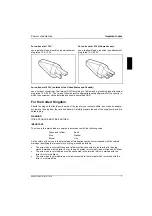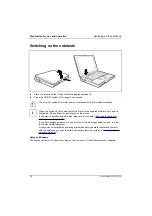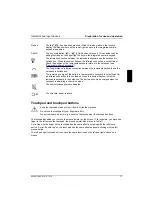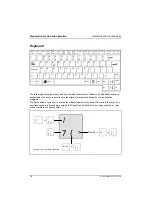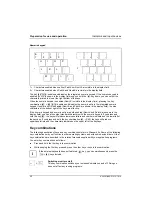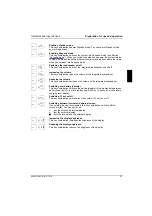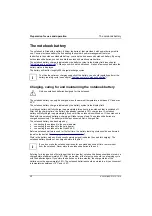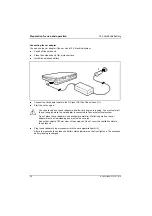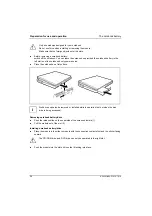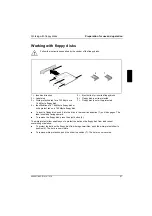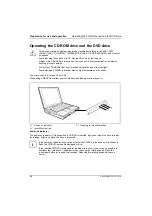
Indicators and input devices
Preparation for use and operation
A26391-K82-Z101-3-7619
19
Backspace key
The Backspace key deletes the character to the left of the cursor.
Tab key
The Tab key moves the cursor to the next tab stop.
Enter key (return, enter, line feed, carriage return)
The enter key terminates a command line. The command you have entered is
executed when you press the key.
Caps Lock key
The Caps Lock key activates uppercase mode (CapsLK is shown in the display
field). The Caps Lock function causes all the characters you type to appear in
uppercase. In the case of overlay keys, the character on the upper left on the
keycap appears when that key is pressed.
To cancel the Caps Lock function, simply press the Caps Lock key again.
Shift key
The Shift key causes uppercase characters to appear. In the case of overlay keys,
the character on the upper left on the keycap appears when that key is pressed.
Alt Gr
Alt Gr key
The
key causes the characters in the lower middle of the keycap to appear
(e.g. { in the case of the
key on the German keyboard).
Fn
Fn key
The
key enables the special functions indicated in blue on overlay keys (see
"Key combinations").
If the external keyboard does not feature a
key, you can simultaneously press
the
+
keys instead.
Cursor keys
The cursor keys move the cursor in the direction of the arrow, i.e., up, down, left, or
right.
Pad Num
Lock
Pad Num key
When the numeric keypad is enabled (PadLK is visible in the display field), the
key causes this set of keys to produce numbers (NumLK appears in the
display field). Pressing them produces the blue characters shown on the bottom
right on the keycaps.
Pause
Break
Pause key
The
key temporarily suspends display output. Output will resume when you
press any other key.
Start key
The Start key invokes the
START
menu of Windows.
Menu button
The Menu key invokes the menu for the marked item.
%
5
,
$
4
Euro key
The Euro key enables the entering of the euro symbol.



